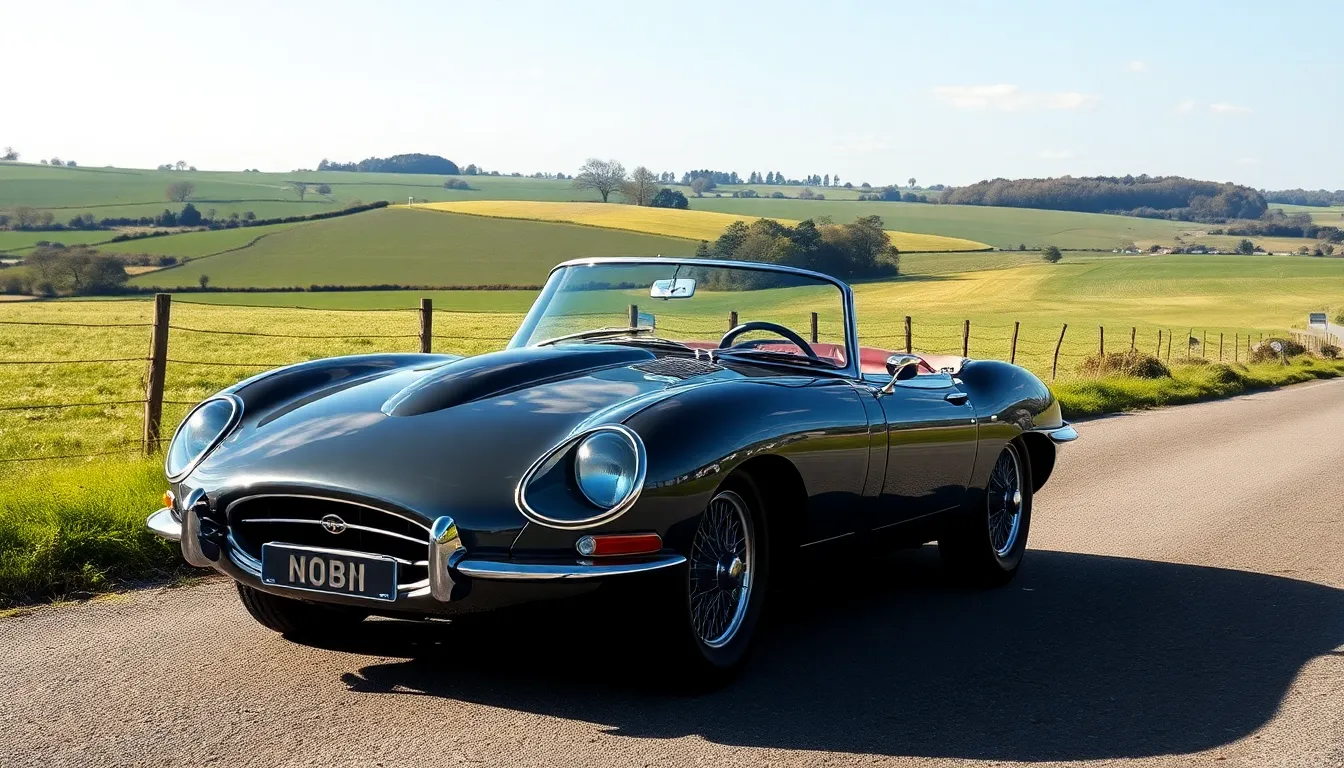British cars have captivated automotive enthusiasts for decades with their distinctive blend of elegance sophistication and engineering prowess. From the luxurious Rolls-Royce to the sporty Jaguar we’ve witnessed these iconic vehicles shape the global automotive industry with their unmistakable character and innovative design philosophy.
We can’t deny the magnetic appeal of British automotive craftsmanship that’s produced legendary brands like Aston Martin Bentley and Land Rover. These manufacturers haven’t just built cars – they’ve created automotive masterpieces that embody British heritage while pushing the boundaries of performance and luxury.
Whether you’re drawn to the classic charm of a vintage Mini Cooper or the raw power of a McLaren supercar British cars offer something truly special. We’ll explore what makes these vehicles so extraordinary and why they continue to command respect and admiration from drivers worldwide.
Classic British Sports Cars That Defined an Era
These legendary British sports cars transformed automotive history and captured hearts worldwide. Each model represents the pinnacle of British engineering craftsmanship during the golden age of motoring.
Jaguar E-Type: The Most Beautiful Car Ever Made
Jaguar’s E-Type revolutionized sports car design when it debuted at the 1961 Geneva Motor Show. Enzo Ferrari famously called it “the most beautiful car ever made,” and automotive enthusiasts still echo this sentiment today. The E-Type’s sleek, aerodynamic silhouette featured a long bonnet, distinctive oval grille, and curvaceous rear end that became instantly recognizable around the industry.
Performance matched the E-Type’s stunning aesthetics with remarkable engineering specifications. The initial Series I models produced 265 horsepower from their 3.8-liter straight-six engine, propelling the lightweight coupe from 0 to 60 mph in just 7.1 seconds. Top speeds reached 150 mph, making it one of the fastest production cars of its era while maintaining exceptional handling characteristics on winding roads.
Production continued for 14 years across three distinct series, with over 72,000 units manufactured. Series II introduced improved safety features and emission controls for the American market, while Series III featured the powerful 5.3-liter V12 engine that became synonymous with Jaguar’s grand touring capabilities. Today’s collectors consider early Series I roadsters and coupes the most desirable, with pristine examples commanding six-figure prices at international auctions.
Aston Martin DB5: James Bond’s Legendary Ride
Aston Martin’s DB5 achieved immortality through its starring role in Sean Connery’s James Bond films. First appearing in “Goldfinger” (1964), the silver DB5 captivated audiences with its sophisticated elegance and fictional spy gadgets including ejector seats, rotating number plates, and machine guns. This cinematic exposure transformed Aston Martin from a boutique manufacturer into a globally recognized luxury brand.
Engineering excellence defined the DB5’s real industry performance beyond its Hollywood fame. The 4.0-liter straight-six engine delivered 282 horsepower through a five-speed ZF manual transmission, enabling acceleration from 0 to 60 mph in 8.1 seconds. Maximum speeds reached 145 mph, while the sophisticated suspension system provided exceptional road holding capabilities that matched its grand touring mission.
Production numbers remained deliberately exclusive with only 1,021 DB5s manufactured between 1963 and 1965. Each car featured hand-built construction, luxurious leather interiors, and meticulous attention to detail that justified its premium pricing. Modern auction results consistently exceed $1 million for well-maintained examples, with the original Bond film cars selling for astronomical sums that reflect their cultural significance and automotive heritage.
MGB: The Affordable British Roadster
MG’s B-series roadster democratized British sports car ownership for enthusiasts worldwide. Launched in 1962, the MGB offered genuine sports car performance and handling at a fraction of the cost demanded by Jaguar or Aston Martin models. Its simple, honest design featured a clean profile, minimal chrome trim, and functional interior that prioritized driving pleasure over luxury appointments.
Reliability and ease of maintenance made the MGB an ideal choice for weekend enthusiasts. The 1.8-liter four-cylinder engine produced 95 horsepower in early models, providing adequate performance while maintaining excellent fuel economy and low running costs. Simple mechanical systems allowed owners to perform routine maintenance in their own garages, fostering a dedicated community of MGB enthusiasts that continues today.
Production spanned 18 years with over 523,000 units manufactured across roadster and GT variants. American exports accounted for the majority of sales, making the MGB the most successful British sports car in terms of total volume. Chrome bumper models from 1962 to 1974 remain most sought after by collectors, while later rubber bumper versions offer more affordable entry points into classic British sports car ownership.
Luxury British Car Brands That Epitomize Elegance
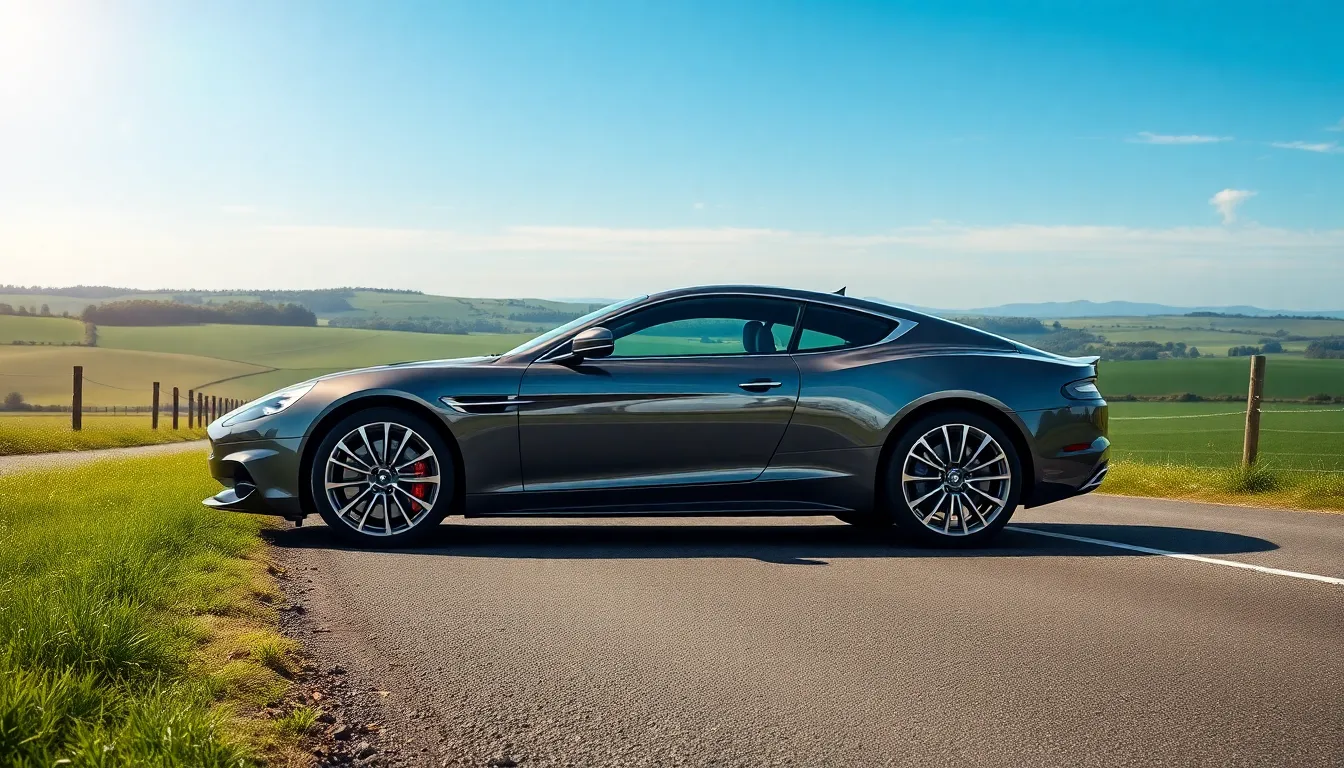
British luxury automotive brands represent the ultimate fusion of traditional craftsmanship with cutting-edge innovation. These prestigious marques continue to set global standards for sophistication and refinement.
Rolls-Royce: The Pinnacle of Automotive Luxury
Rolls-Royce stands as the undisputed king of luxury automobiles, crafting vehicles that serve as rolling masterpieces of engineering excellence. Founded in 1904, this iconic brand has maintained its reputation for creating the industry’s most exclusive cars through meticulous attention to detail and uncompromising quality standards.
Hand-built construction defines every Rolls-Royce vehicle, with skilled artisans spending hundreds of hours perfecting each model. The brand’s signature features include whisper-quiet V12 engines, lambswool carpets, and hand-stitched leather interiors that showcase the finest British craftsmanship. Modern models like the Phantom and Cullinan combine traditional luxury with contemporary technology, offering customers bespoke customization options that make each vehicle truly unique.
Exclusivity remains central to the Rolls-Royce experience, with annual production limited to fewer than 6,000 vehicles worldwide. This scarcity ensures that owning a Rolls-Royce represents membership in an elite group of discerning automotive enthusiasts who appreciate the finest things in life.
Bentley: Performance Meets Opulence
Bentley masterfully balances luxurious comfort with exhilarating performance, creating grand touring cars that excel on both highways and racetracks. Since 1919, this Crewe-based manufacturer has built vehicles that combine British elegance with Germanic engineering precision, following Volkswagen Group’s acquisition in 1998.
Twin-turbocharged W12 engines power Bentley’s flagship models, delivering impressive acceleration while maintaining the refined driving experience expected from a luxury brand. The Continental GT can reach 60 mph in just 3.6 seconds, proving that opulent interiors don’t compromise ever-changing capabilities. Diamond-quilted leather seats, handcrafted wood veneers, and Naim audio systems create cabin environments that rival the industry’s finest private jets.
Racing heritage influences every Bentley design, from the Speed models that dominate GT3 competitions to road cars that incorporate motorsport-derived technologies. This performance DNA ensures that Bentley owners enjoy both prestige and driving excitement in equal measure.
Jaguar: Combining Grace and Power
Jaguar epitomizes the perfect marriage between elegant design and athletic performance, creating vehicles that embody the spirit of British motoring excellence. The Coventry-based brand has consistently delivered cars that turn heads while providing thrilling driving experiences across multiple decades of automotive innovation.
Supercharged V8 engines define modern Jaguar performance, with models like the F-Type producing up to 575 horsepower while maintaining the brand’s signature refinement. The XJ sedan showcases aluminum construction techniques that reduce weight without sacrificing structural integrity, while the F-Pace SUV demonstrates how traditional Jaguar dynamics translate to contemporary vehicle segments.
Design language remains distinctively Jaguar, featuring flowing lines, distinctive grilles, and predatory stance that make these vehicles instantly recognizable. Interior appointments include premium leather upholstery, real wood trim, and advanced infotainment systems that blend traditional British luxury with modern connectivity features.
British Cars That Revolutionized Motorsports
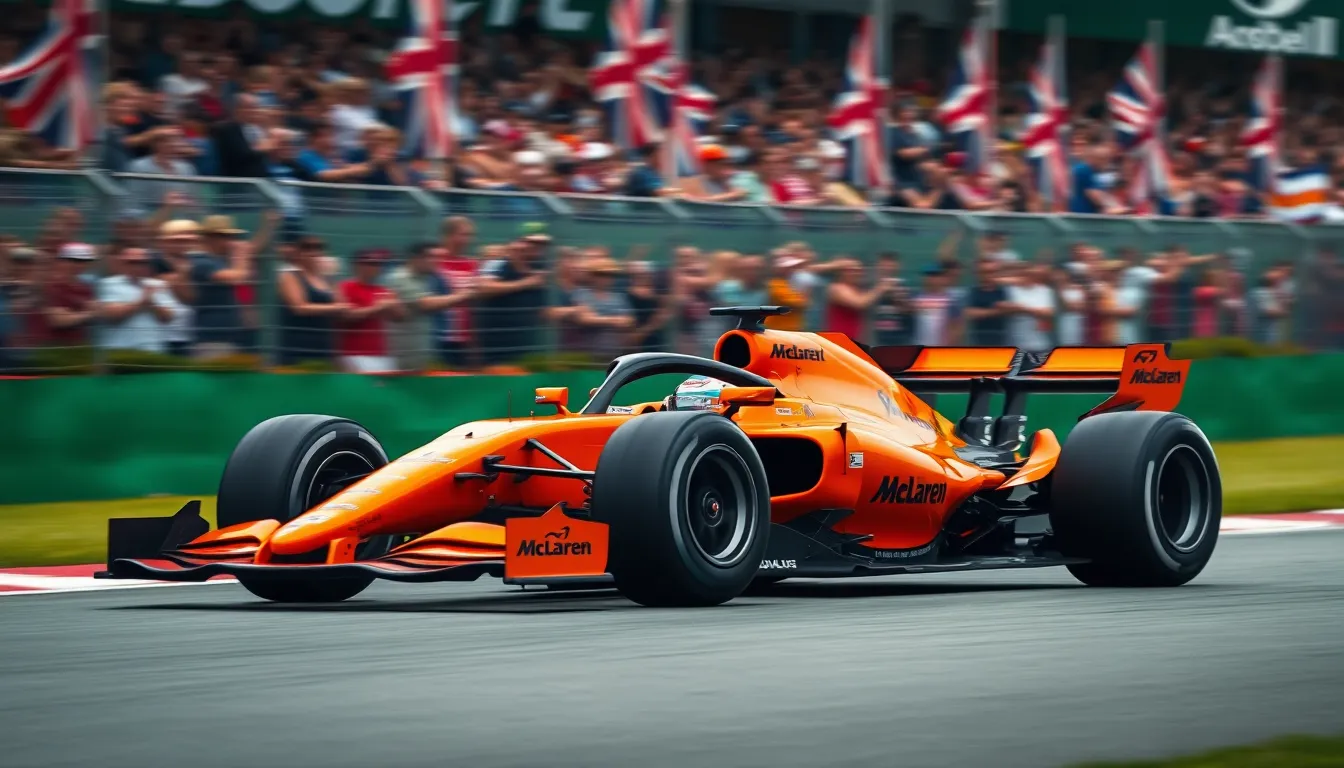
British engineering prowess extends far beyond luxury and style, creating racing machines that transformed motorsports forever. These pioneering vehicles didn’t just compete; they redefined what’s possible on track and road.
McLaren: From Formula 1 to Street Supercars
McLaren transformed motorsports through relentless innovation and engineering excellence that began in Formula 1 racing. Bruce McLaren founded the company in 1963, establishing a legacy that would produce championship winning race cars and revolutionary street machines.
Formula 1 dominance came through groundbreaking technologies that McLaren pioneered throughout the 1970s and 1980s. Carbon fiber monocoque construction debuted in the McLaren MP4/1, fundamentally changing how race cars were built and inspiring an entire industry shift toward lightweight materials.
Street supercars emerged when McLaren applied racing technology to road going vehicles with the legendary McLaren F1. This engineering masterpiece featured a naturally aspirated V12 engine producing 627 horsepower and achieved a top speed of 240 mph, making it the fastest production car for over a decade.
Modern McLaren supercars continue pushing boundaries with active aerodynamics, advanced suspension systems, and hybrid powertrains derived directly from Formula 1 technology. Models like the P1 and Senna showcase how racing innovations translate into extraordinary road cars that deliver uncompromising performance.
Lotus: Engineering Excellence and Innovation
Lotus revolutionized motorsports through Colin Chapman’s philosophy of adding lightness and maximizing efficiency over raw power. Chapman founded the company in 1952 with a vision that weight reduction could overcome horsepower disadvantages, fundamentally changing racing car design.
Ground effect aerodynamics emerged from Lotus engineering in the late 1970s, creating downforce that allowed cars to corner at previously impossible speeds. The Lotus 78 and 79 Formula 1 cars dominated racing by using underbody airflow to literally suck the car to the track surface.
Innovation extended beyond aerodynamics to suspension systems, with Lotus developing advanced multi link setups that improved handling precision. These technologies later appeared in road cars, making everyday vehicles more responsive and enjoyable to drive.
Racing success translated into iconic street cars like the Lotus Elise and Exige, which demonstrated that lightweight construction could create thrilling performance without massive engines. These models proved that British engineering could produce affordable sports cars that rivaled much more expensive alternatives.
Mini Cooper: Rally Racing Legend
Mini Cooper conquered rally racing through an unlikely combination of compact size, front wheel drive innovation, and exceptional handling dynamics. British Motor Corporation created this small car in 1959, but it was John Cooper’s performance modifications that transformed it into a racing icon.
Rally championships came through the Mini’s ability to navigate tight mountain roads and challenging terrain that larger cars couldn’t handle effectively. The car’s low center of gravity and nimble handling made it unbeatable on twisty rally stages across Europe.
Monte Carlo Rally victories in 1964, 1965, and 1967 established the Mini Cooper as a giant killer that could defeat much larger and more powerful competitors. These wins proved that intelligent engineering and driver skill could overcome size and power disadvantages in motorsports.
Racing heritage continues influencing modern Mini Cooper models, which maintain the original’s spirit while incorporating contemporary performance technologies. Today’s Mini John Cooper Works models honor the racing legacy with turbocharged engines, sport tuned suspensions, and aggressive styling that recalls those legendary rally cars.
Modern British Supercars Competing on the Global Stage

Today’s British supercar manufacturers continue pushing technological boundaries while competing against global automotive giants. We’re witnessing an unprecedented era where British engineering excellence meets cutting edge innovation.
McLaren P1: Hybrid Hypercar Technology
McLaren P1 revolutionized supercar performance through its groundbreaking hybrid powertrain system. We see a perfect marriage between a twin turbo V8 engine producing 727 horsepower and an electric motor adding another 176 horsepower for a combined 903 horsepower output.
Advanced carbon fiber construction keeps the P1’s weight at just 3,285 pounds even though housing complex hybrid technology. McLaren engineers integrated Formula 1 derived systems including active aerodynamics that automatically adjusts downforce levels based on driving conditions.
Performance figures demonstrate the P1’s technological superiority with acceleration from 0 to 60 mph in 2.8 seconds and a top speed electronically limited to 217 mph. Electric only mode allows silent urban driving for up to 6.2 miles while preserving the environment around residential areas.
Production limited to just 375 units worldwide made the P1 an instant collector’s item valued at over $1.15 million each. Track focused variants like the P1 GTR pushed performance boundaries even further with increased aerodynamic efficiency and reduced weight.
Aston Martin Valkyrie: Formula 1 Inspired Design
Aston Martin Valkyrie represents the ultimate fusion between Formula 1 technology and road legal supercars. We observe direct collaboration between Aston Martin and Red Bull Racing that brought Adrian Newey’s aerodynamic expertise to street car development.
Naturally aspirated Cosworth V12 engine produces 1,000 horsepower without turbocharging while maintaining the pure engine sound enthusiasts crave. Hybrid system adds another 160 horsepower through kinetic energy recovery similar to current Formula 1 cars.
Weight optimization achieved through extensive carbon fiber construction results in a dry weight of just 2,271 pounds. Active aerodynamics generate over 4,000 pounds of downforce at 150 mph while maintaining stability through high speed corners.
Interior design prioritizes driver focus with a reclined seating position that places occupants almost lying down like Formula 1 drivers. Carbon fiber steering wheel integrates all essential controls while eliminating traditional dashboard elements for weight reduction.
Limited production run of 150 road cars plus 25 track only versions ensures exclusivity among the industry’s most discerning collectors. Pricing starting at $3.2 million reflects the extensive research and development required for such advanced technology.
Lotus Evija: All Electric British Power
Lotus Evija marks the brand’s bold transition into all electric hypercar territory with unprecedented performance capabilities. We witness four electric motors producing a combined 1,972 horsepower that establishes new benchmarks for instant torque delivery.
Battery technology utilizes a 70 kWh lithium ion pack that provides up to 250 miles of range while supporting 800 volt fast charging systems. Acceleration performance reaches 0 to 60 mph in under 3 seconds with quarter mile times competing against the industry’s fastest supercars.
Aerodynamic design incorporates active elements that channel airflow through the vehicle’s body rather than around it. Lotus engineers created venturi tunnels that reduce drag while generating important downforce without traditional wing elements.
Carbon fiber monocoque construction maintains Lotus’s lightweight philosophy even though housing heavy battery systems. Total vehicle weight remains below 3,700 pounds through extensive use of advanced materials and optimized component placement.
Production planning limits the Evija to just 130 units worldwide with pricing starting at $2.1 million per vehicle. Each car requires hand assembly at Lotus’s Hethel facility where craftsmen integrate traditional British attention to detail with futuristic electric technology.
Iconic British Car Models That Became Cultural Symbols
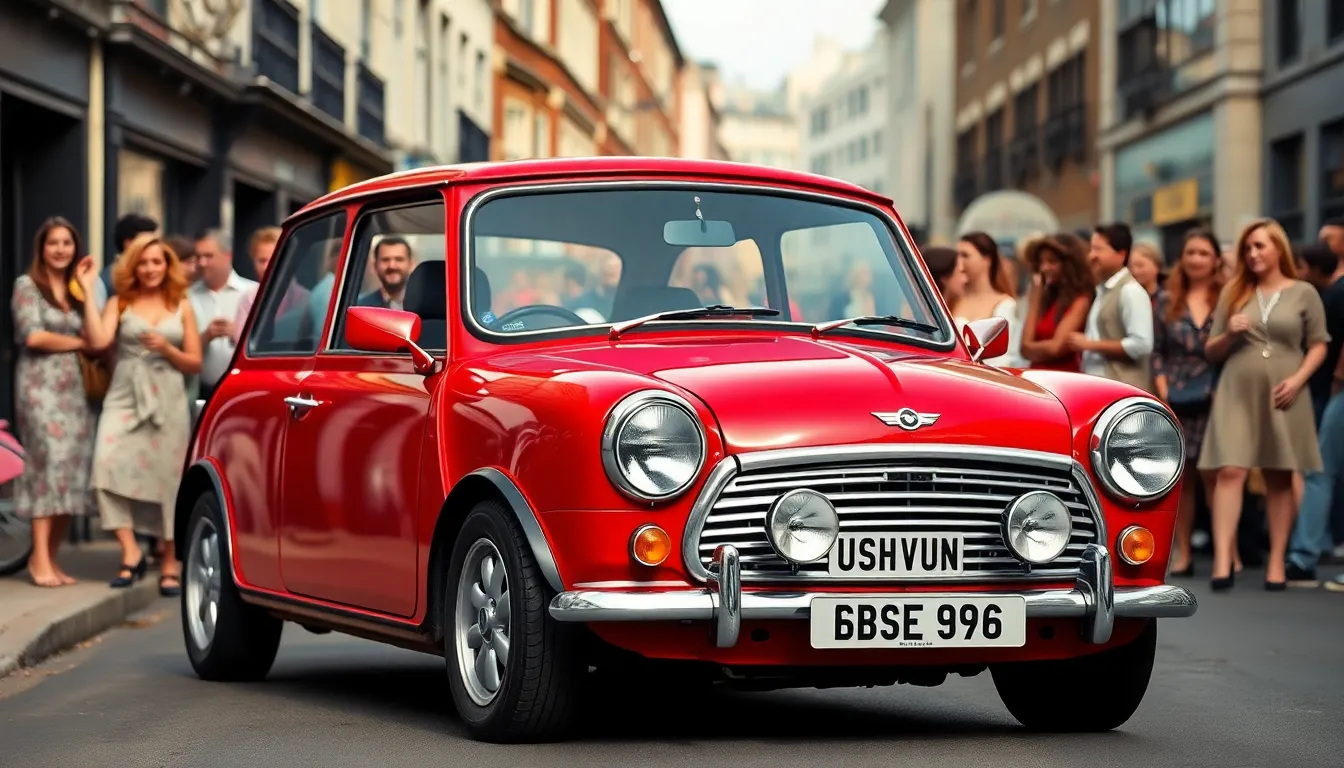
British automotive history extends beyond engineering excellence to create vehicles that transcended their original purpose. We’ve witnessed certain models become ingrained in popular culture and define entire generations.
Mini Cooper: The Swinging Sixties Icon
Mini Cooper epitomized the youth culture revolution of 1960s Britain, becoming a symbol of freedom and rebellion. Fashion icons like Twiggy and The Beatles drove these compact cars through London streets, establishing them as essential accessories of the mod lifestyle. Film appearances solidified the Mini’s cultural status, with the 1969 movie “The Italian Job” featuring three red, white, and blue Minis executing daring chase sequences through Turin’s narrow streets.
Racing success amplified the Mini Cooper’s reputation beyond fashion circles. Rally driver Paddy Hopkirk piloted his Cooper S to victory at the 1964 Monte Carlo Rally, proving that British engineering could triumph over larger European competitors. We saw this David versus Goliath narrative capture public imagination, transforming a practical city car into a symbol of British ingenuity.
Social barriers dissolved as celebrities and working class families alike embraced the affordable Mini Cooper. Musicians, actors, and ordinary citizens shared the same driving experience, making it one of the first truly classless British cars. Production numbers reached over 5.3 million units between 1961 and 2000, cementing its status as Britain’s most democratically loved automobile.
Land Rover Defender: British Adventure Vehicle
Land Rover Defender emerged from post war Britain as the ultimate expression of practical engineering and adventurous spirit. Military origins shaped its rugged character, with the British Army adopting early Series models for operations across challenging terrains worldwide. We recognize how this utilitarian background transformed the Defender into a symbol of British resilience and capability.
Expedition teams chose Defenders for their reliability during extreme adventures, from Arctic exploration to African safari expeditions. Television programs like “Top Gear” showcased Defenders conquering impossible landscapes, reinforcing their reputation as unstoppable adventure machines. Documentary crews and aid organizations relied on these vehicles to reach remote locations, making them symbols of humanitarian mission work.
Cultural significance expanded as the Defender became associated with British countryside lifestyle and outdoor pursuits. Farmers, hunters, and equestrian enthusiasts adopted Defenders as essential tools for rural life, while urban professionals embraced them as status symbols representing adventure readiness. Production ended in 2016 after 68 years, but the Defender’s cultural impact continues through its association with British exploration heritage.
Jaguar XJ220: 1990s Supercar Dreams
Jaguar XJ220 represented the pinnacle of British automotive ambition during the early 1990s supercar boom. Initial concept car unveiling in 1988 generated enormous excitement, with its futuristic design and promised V12 engine capturing imaginations worldwide. We witnessed how this prototype became a symbol of Britain’s determination to compete with Italian and German supercar manufacturers.
Production reality differed from original promises, creating both controversy and cult status among enthusiasts. Engineers replaced the planned V12 with a twin turbocharged V6 engine, while removing the four wheel drive system to reduce weight and complexity. Even though these changes, the XJ220 achieved a top speed of 217 mph, making it the industry’s fastest production car at the time.
Limited production of 275 units transformed the XJ220 into an exclusive collector’s item representing 1990s excess culture. Celebrity owners included Elton John and Jay Leno, while the car’s appearances in video games and automotive magazines solidified its status as a dream machine. Economic recession affected sales, but we recognize how the XJ220’s rarity and performance credentials established it as an icon of British supercar achievement.
British Car Heritage and Manufacturing Excellence
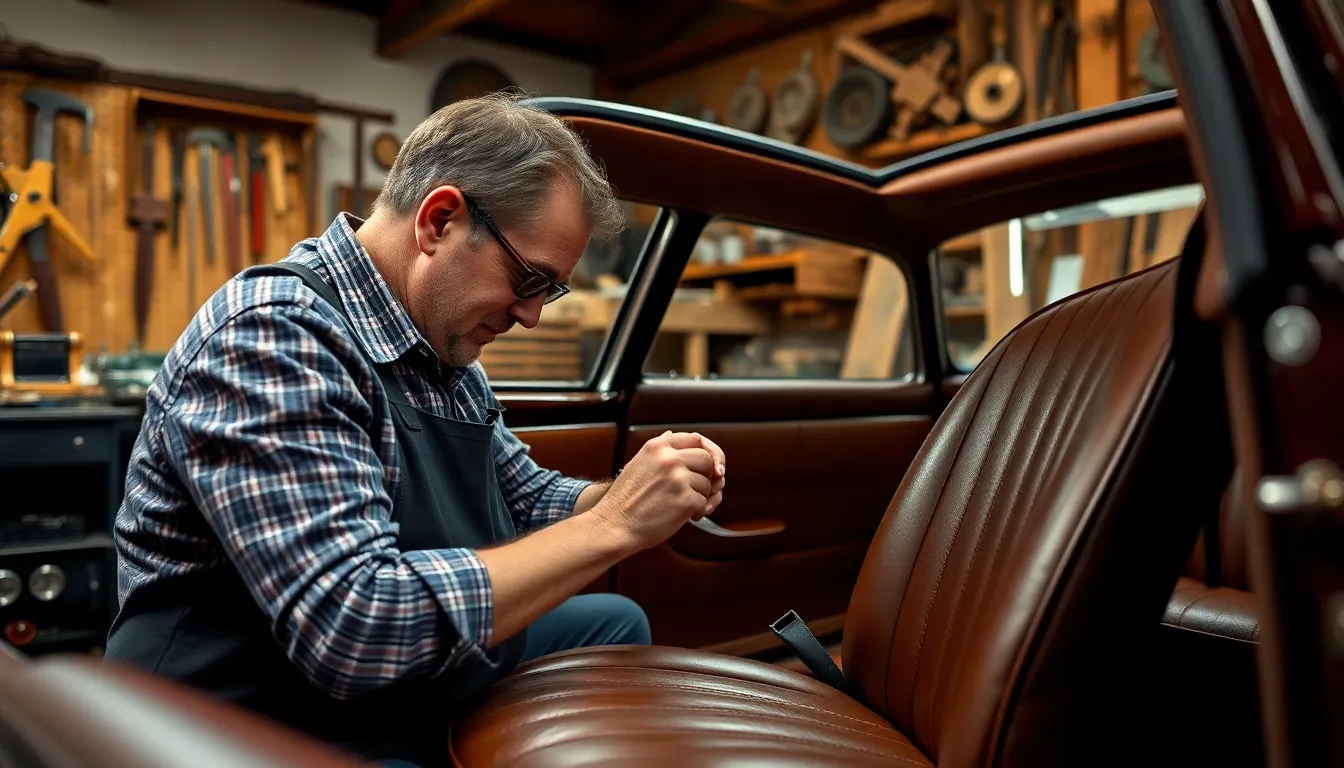
We’ve witnessed how British automotive excellence has shaped the industry through decades of innovation and cultural impact. Now let’s explore the deeper foundations that make British car manufacturing truly exceptional.
Craftsmanship Traditions Passed Down Through Generations
British car manufacturers maintain time-honored craftsmanship methods that have been refined over centuries. Rolls-Royce apprenticeship programs take seven years to complete, ensuring each craftsperson masters traditional techniques like hand-polishing woodwork and hand-stitching leather interiors. Morgan Motor Company continues to use ash wood frames in their sports cars, a construction method unchanged since 1936, with master woodworkers passing down skills through multiple generations of the same families.
Bentley’s Crewe factory employs artisans who’ve spent decades perfecting the art of diamond-quilted leather stitching, with some craftspeople producing only 6-8 steering wheels per day to maintain quality standards. Aston Martin’s Q division represents the pinnacle of bespoke manufacturing, where individual specialists work on single vehicles for months, creating unique elements like hand-painted coachlines and personalized interior details.
British Racing Green: The Color of Champions
British Racing Green emerged as the official racing color for British motorsport in 1903, mandated by international racing regulations that assigned exact colors to each nation. We see this heritage color prominently featured on championship-winning vehicles like Jim Clark’s Lotus 25 Formula 1 car and the Bentley Speed 8 that dominated Le Mans in 2003.
McLaren used British Racing Green on their MP4/13 Formula 1 car that won the 1998 Constructors’ Championship, while Jaguar’s XKR-S featured exclusive Racing Green paint options that paid homage to the brand’s motorsport legacy. Aston Martin’s Racing Green variants, particularly on models like the DB11 and Vantage, incorporate metallic flakes that create depth and richness unavailable on standard automotive paints.
Modern manufacturers continue this tradition with updated formulations like Aston Martin’s Appletree Green and McLaren’s Emerald Green, which maintain the historical significance while incorporating contemporary paint technology and UV resistance.
Hand-Built Quality vs. Mass Production
Hand-built British vehicles demonstrate measurable quality differences compared to mass-produced alternatives. Rolls-Royce produces only 4,000-5,000 vehicles annually, with each car requiring 450 hours of handwork and involving 1,200 individual quality checkpoints throughout the manufacturing process.
Lotus maintains production volumes under 2,500 cars per year, allowing engineers to personally inspect every chassis weld and suspension component, while McLaren’s Production Centre limits output to 5,000 supercars annually to preserve artisanal attention to detail. We observe that hand-built vehicles typically exhibit paint thickness variations of less than 5 microns across panels, compared to 15-20 micron variations in mass-produced vehicles.
| Manufacturer | Annual Production | Hand-Build Hours per Vehicle | Quality Checkpoints |
|---|---|---|---|
| Rolls-Royce | 4,500 | 450 | 1,200 |
| Bentley | 11,000 | 130 | 850 |
| McLaren | 5,000 | 300 | 600 |
| Morgan | 850 | 500 | 400 |
Mass production allows manufacturers like Jaguar Land Rover to produce 580,000 vehicles annually while maintaining British engineering principles through advanced robotics and quality control systems that replicate hand-built precision at scale.
Challenges Facing British Cars in Today’s Market
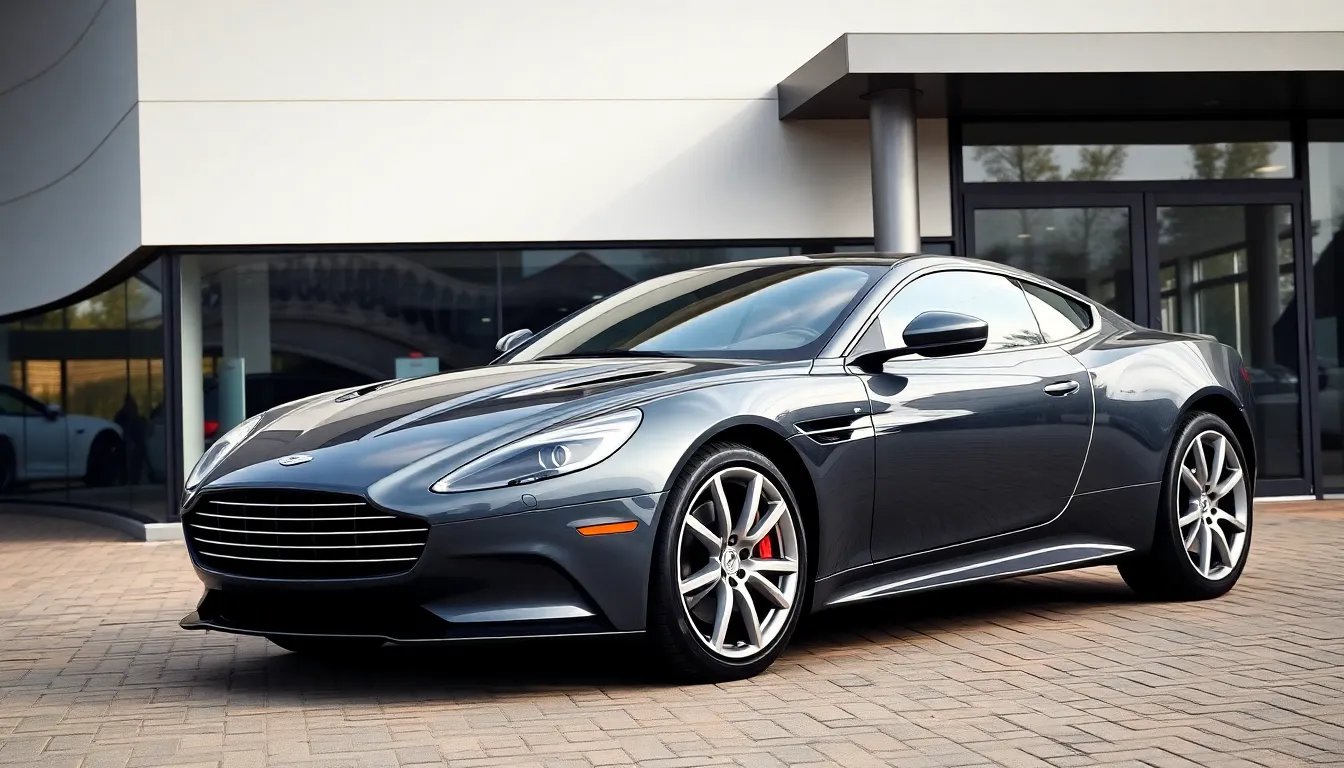
British car manufacturers face unprecedented challenges that threaten their historical dominance in the global automotive industry. We examine the key obstacles that brands like Rolls-Royce, Jaguar, and Aston Martin must navigate to maintain their legendary status.
Competition from German and Japanese Manufacturers
German powerhouses Mercedes-Benz, BMW, and Audi have captured important market share in the luxury segment traditionally dominated by British brands. These manufacturers offer comparable luxury features with proven reliability records that many consumers find appealing. BMW’s acquisition of Rolls-Royce manufacturing rights in 1998 demonstrates how German companies have successfully integrated British heritage with Bavarian engineering efficiency.
Japanese manufacturers Toyota, Lexus, and Honda present formidable competition through their reputation for exceptional reliability and lower maintenance costs. Lexus has particularly challenged British luxury brands by offering premium features at competitive prices while maintaining Toyota’s legendary dependability. We see Japanese brands consistently ranking higher in reliability studies compared to traditional British manufacturers.
Production volume advantages allow German and Japanese competitors to achieve economies of scale that British manufacturers struggle to match. Mercedes-Benz produces over 2 million vehicles annually while Jaguar Land Rover manufactures approximately 500,000 units per year. This volume disparity translates into competitive pricing and broader dealer networks that enhance market accessibility.
Brexit Impact on Export Markets
European Union tariffs now apply to British car exports following Brexit implementation, increasing vehicle costs for continental buyers by up to 10%. Jaguar Land Rover reported a 23% decline in EU sales during the first year post-Brexit as price increases made British cars less competitive against German and Italian alternatives.
Supply chain disruptions have created manufacturing delays and increased production costs for British automakers. Components previously sourced freely from EU suppliers now face customs delays and additional administrative burdens. We observe that these complications have forced manufacturers to seek alternative suppliers or relocate production facilities.
Currency fluctuations following Brexit have created pricing uncertainty in international markets. The British pound’s volatility affects export pricing strategies and profit margins for manufacturers selling in euro and dollar denominated markets. Aston Martin specifically cited currency impacts as a factor in their financial restructuring efforts.
Electric Vehicle Transition Strategies
Infrastructure investment requirements demand substantial capital allocation that smaller British manufacturers find challenging to fund independently. We estimate that developing electric vehicle platforms costs between $1-2 billion per manufacturer while building battery production facilities requires additional billions in investment.
Battery technology partnerships have become essential as British brands lack the internal expertise of Tesla or Chinese manufacturers like BYD. Jaguar partnered with Samsung SDI for I-PACE batteries while McLaren collaborates with multiple suppliers to secure advanced battery cells for their hybrid supercars.
Market positioning challenges arise as British manufacturers must balance their heritage appeal with modern electric performance expectations. Traditional buyers of Bentley and Rolls-Royce vehicles may resist fully electric powertrains while younger consumers prioritize environmental credentials over conventional luxury features.
Government regulations in key markets mandate exact electric vehicle sales percentages that British manufacturers must meet by 2030. The UK requires 80% of new car sales to be electric by 2030 while California implements similar quotas that affect British brands selling in American markets.
Conclusion
British cars remain a testament to automotive artistry and engineering excellence. From the handcrafted luxury of Rolls-Royce to the cutting-edge technology of McLaren’s hybrid supercars these vehicles continue to captivate enthusiasts worldwide.
Even though facing modern challenges from global competitors and the electric vehicle transition British manufacturers are adapting while preserving their rich heritage. They’re finding innovative ways to blend traditional craftsmanship with contemporary technology.
Whether you’re drawn to classic models that shaped automotive history or modern supercars pushing technological boundaries British cars offer something truly special. Their unique combination of elegance performance and cultural significance ensures they’ll remain influential in the automotive industry for generations to come.
Frequently Asked Questions
What makes British cars so special and distinctive?
British cars are renowned for their unique combination of elegance, sophistication, and engineering excellence. They embody traditional craftsmanship with hand-built quality, premium materials, and attention to detail. Iconic brands like Rolls-Royce, Jaguar, and Aston Martin have built reputations on luxury, performance, and heritage that spans generations, creating vehicles that are both functional and cultural symbols.
Which classic British sports cars defined automotive history?
The most influential classic British sports cars include the Jaguar E-Type, known for its stunning design and impressive performance; the Aston Martin DB5, famously featured as James Bond’s vehicle; and the MGB, which made sports car ownership accessible to everyday drivers. These models represent the pinnacle of British engineering craftsmanship and continue to captivate enthusiasts worldwide.
What are the most prestigious luxury British car brands?
The top luxury British car brands are Rolls-Royce, Bentley, and Jaguar. Rolls-Royce leads as the king of luxury automobiles with hand-built vehicles and bespoke customization. Bentley balances opulence with performance through powerful engines and racing heritage. Jaguar combines graceful design with athletic performance while maintaining signature refinement and incorporating advanced technology.
How have British cars contributed to motorsports innovation?
British manufacturers have revolutionized racing through groundbreaking innovations. McLaren introduced carbon fiber monocoque construction in Formula 1 and created the legendary McLaren F1 supercar. Lotus pioneered lightness and efficiency philosophy, advancing aerodynamics and suspension technology. Even the Mini Cooper achieved rally racing success, proving compact size and clever engineering could triumph over larger competitors.
What modern British supercars showcase cutting-edge technology?
Current British supercars pushing technological boundaries include the McLaren P1 with its revolutionary hybrid powertrain producing 903 horsepower, the Aston Martin Valkyrie featuring Formula 1-inspired design and a naturally aspirated V12 engine, and the all-electric Lotus Evija boasting 1,972 horsepower from four electric motors, representing the future of British automotive innovation.
Which British cars have become cultural icons beyond automobiles?
The Mini Cooper became a symbol of 1960s youth culture and rally success, the Land Rover Defender represents British exploration and rugged adventure, and the Jaguar XJ220 embodies 1990s supercar ambition with its 217 mph top speed. These models transcended their original automotive purpose to become enduring cultural symbols and collector’s items.
What challenges do British car manufacturers face today?
British car manufacturers face intense competition from German and Japanese luxury brands, Brexit-related export difficulties including tariffs and supply chain disruptions, and the costly transition to electric vehicles. They must balance maintaining their heritage and craftsmanship traditions while investing in modern technology and infrastructure to remain competitive in the evolving automotive market.
How do British cars maintain their traditional craftsmanship standards?
British manufacturers preserve craftsmanship through rigorous apprenticeship programs, traditional construction methods, and hand-built quality control. Companies like Rolls-Royce and Morgan Motor Company continue using time-honored techniques passed down through generations. Modern manufacturers blend these traditions with advanced robotics and quality systems to maintain precision while achieving larger-scale production.

